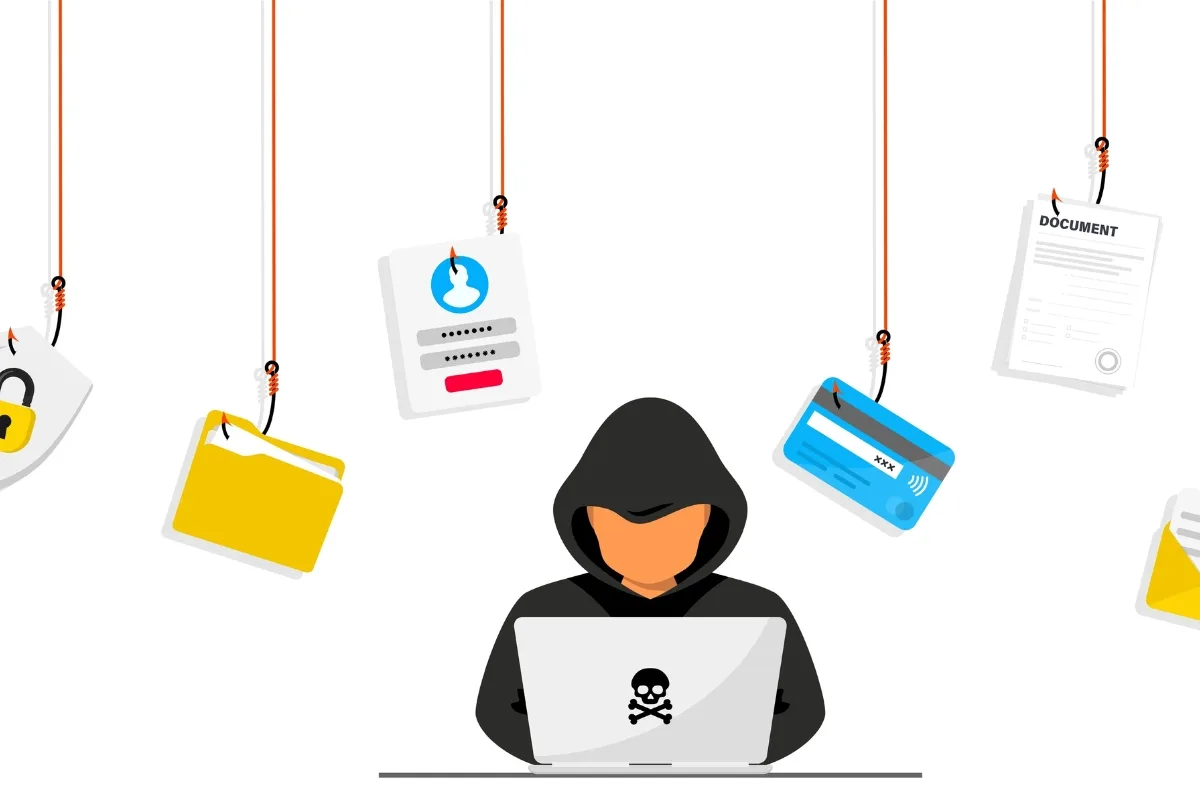
Phishing is the most prevalent and costly form of cybercrime, with billions of malicious emails sent every day. According to a latest report by Cloudflare, phishing was involved in 90% of successful cyberattacks in 2023. Phasing attacks use deceptive links, identity deception, and brand impersonation to trick recipients into divulging sensitive information or downloading malware. Phishing attacks seek to trick users into disclosing sensitive information or downloading malicious content by transmitting fraudulent emails that seem to be from legitimate sources. One of the most effective ways attackers lure victims is by attaching files or links containing malware, ransomware, spyware, or other harmful software. Therefore, it is crucial for users to be able to identify and avoid common types of email attachments used in phishing attempts to improve their cybersecurity attention and protect themselves and their organizations from potential harm.
What is Phishing?
Phishing is a form of social engineering that exploits human psychology and trust to trick users into performing actions that benefit the attacker. Phishing attacks often involve sending deceptive emails that mimic legitimate emails’ style, tone, and content from trusted commodities. Such as banks, government agencies, or online services. These aim to persuade the recipient to either reveal personal or financial data. Such as passwords, credit card numbers, or bank account facts, or download or open an attachment or a link containing malicious code or software. Once the user drops for the phishing email, the attacker can use the stolen information or the installed malware to access the user’s system, network, or online accounts and cause damage, theft, or disruption.
Purpose of Email Attachments in Phishing Attacks
Email attachments are one of the most common and effective methods that attackers use to deliver malware or other malicious content to unsuspecting users. Malware is any software that is developed to harm or compromise a computer, network, or device. Some samples of malware are viruses, worms, trojans, ransomware, spyware, adware, and keyloggers. Malware can perform diverse malicious operations, such as deleting, encrypting, or modifying data, stealing or leaking information, monitoring or controlling user activity, disrupting or disabling system functions, or spreading to other devices or networks.
Common Types of Email Attachments Used in Phishing Attacks
Many types of spam email attachments can be used in phishing attacks, but some of the most common ones are:
Microsoft Office documents (e.g., Word, Excel, PowerPoint):
These are widely used and trusted file formats that can contain macros, which are small programs that can perform various tasks. However, macros can also be used to run malicious code or scripts that can infect the user’s system or download additional malware. Attackers often use Microsoft Office documents that have macros enabled by default or prompt the user to enable editing or content to execute the malicious code. Some examples of phishing emails that use Microsoft Office documents are invoices, receipts, reports, or contracts that seem to be from legitimate businesses or organizations. Here you can read more about Protect Your SMB from Cyberthreats
PDF files:
These popular and trusted file formats can display various types of content, such as text, images, or links. However, PDF files can also contain embedded executable files, JavaScript code, or malicious links that can run or download malware when the user opens the PDF.
DOC or DOCX files:
These are usually Microsoft Word documents that may include macros, which are small schedules that can operate automatically when you open the file. Macros can be exploited to execute malicious code or download other malware onto your device.
ZIP or RAR files:
These are condensed files that can include multiple files or folders. They may hide malware or phishing pages inside them, which can be activated when you extract or open the files3.
HTML files:
These are web pages that can either redirect you to a fake website or display a full-fledged phishing page when you open them. They may try to fool you into entering your login credentials, private information, or payment details.
EXE files:
These are executable files that can run programs or applications on your device. They are often disguised as other file types, such as images or videos. They may include malware that can harm your device or steal your data.
Security Best Practices for Handling Email Attachments
To safely handle common email attachments and protect themselves and their organizations from phishing attacks, users should follow these practical tips and best practices:
Verify the sender’s identity before downloading attachments:
Users should always stem the sender’s email address and domain name for any misspellings, typos, or unusual characters that could indicate a spoofed or fake email address. They also look for other signs of authenticity, such as the sender’s signature, logo, or contact information. Users should not rely on the sender’s name or the email subject alone, as these can be easily faked or manipulated by attackers to avoid these email threats.
Avoid connecting to links or downloading attachments from doubtful emails:
Users should be cautious of any email attachments to do email authentication that urges them to download or open them immediately or that claim to be urgent or important. You also be suspicious of any email attachments that they did not request or that are irrelevant to their interests or activities. Users should always question the attachment’s legitimacy and necessity and avoid clicking on links or downloading attachments from suspicious emails.
Use antivirus software to scan email attachments for malware:
Users should always use reliable and updated antivirus software to scan email attachments for malware before downloading or opening them. You also enable the antivirus software to scan incoming and outgoing emails automatically and to block or quarantine any suspicious or malicious attachments. Users should also avoid disabling or bypassing the antivirus software or any security warnings or alerts that indicate a potential threat or risk associated with the email attachment.
Control software and procedures up to date with the latest security patches:
Users should always keep their software and systems up to date with the tardy safety patches and updates that can fix or prevent vulnerabilities or exploits that attackers can use to deliver malware or other malicious content via email attachments. Users should enable the automatic update feature when possible or regularly review for and install any available updates for their software and systems.
Real-World Examples and Case Studies
To illustrate the dangers and impacts of phishing attacks involving email attachments. Here are some real-world examples and case studies of such attacks:
The Emotet Trojan:
Emotet is a notorious and sophisticated trojan that can steal data, spread malware, or create backdoors for attackers to access and control infected systems or networks. Emotet is often delivered via email attachments that contain malicious Microsoft Word documents that prompt the user to enable macros or editing to view the content. Once the user does so, the macro runs a script that downloads and installs Emotet on the user’s system.
The Dridex Banking Trojan:
Dridex is another notorious and sophisticated trojan. That can steal banking credentials, financial data, or other sensitive information from infected systems or networks. Dridex is often delivered via email attachments that contain malicious Microsoft Excel documents that prompt the user to enable macros or content to view the content. Once the user does so, the macro runs a script that downloads and installs Dridex on the user’s system. Dridex can then monitor the user’s online banking activity, intercept the user’s keystrokes, or redirect the user to fake or phishing websites that can steal the user’s banking credentials, account details, or transactions.
The Locky Ransomware:
Locky is a notorious and destructive ransomware that can encrypt the user’s files and demand a ransom for their decryption. Locky is often delivered via email attachments that contain malicious ZIP archives that claim to contain important or confidential documents such as invoices, receipts, or scans. Once the user extracts the archive and opens the file, the file runs a script. The script downloads and installs Locky on the user’s system. Locky can then scan the user’s system and network for files and encrypt them with a strong and unique encryption key.
Conclusion
Phishing attacks are one of the most common and dangerous forms of cyberattacks in today’s digital world. Phishing attacks often involve sending fraudulent emails that appear to be from legitimate sources. They contain files or links that contain malware or other malicious content. One of the most effective ways attackers lure victims is by attaching files or links containing malware, ransomware, spyware, or other harmful software. Here, you can get cybersecurity Services to prevent these types of attacks to keep your systems and data secure.

